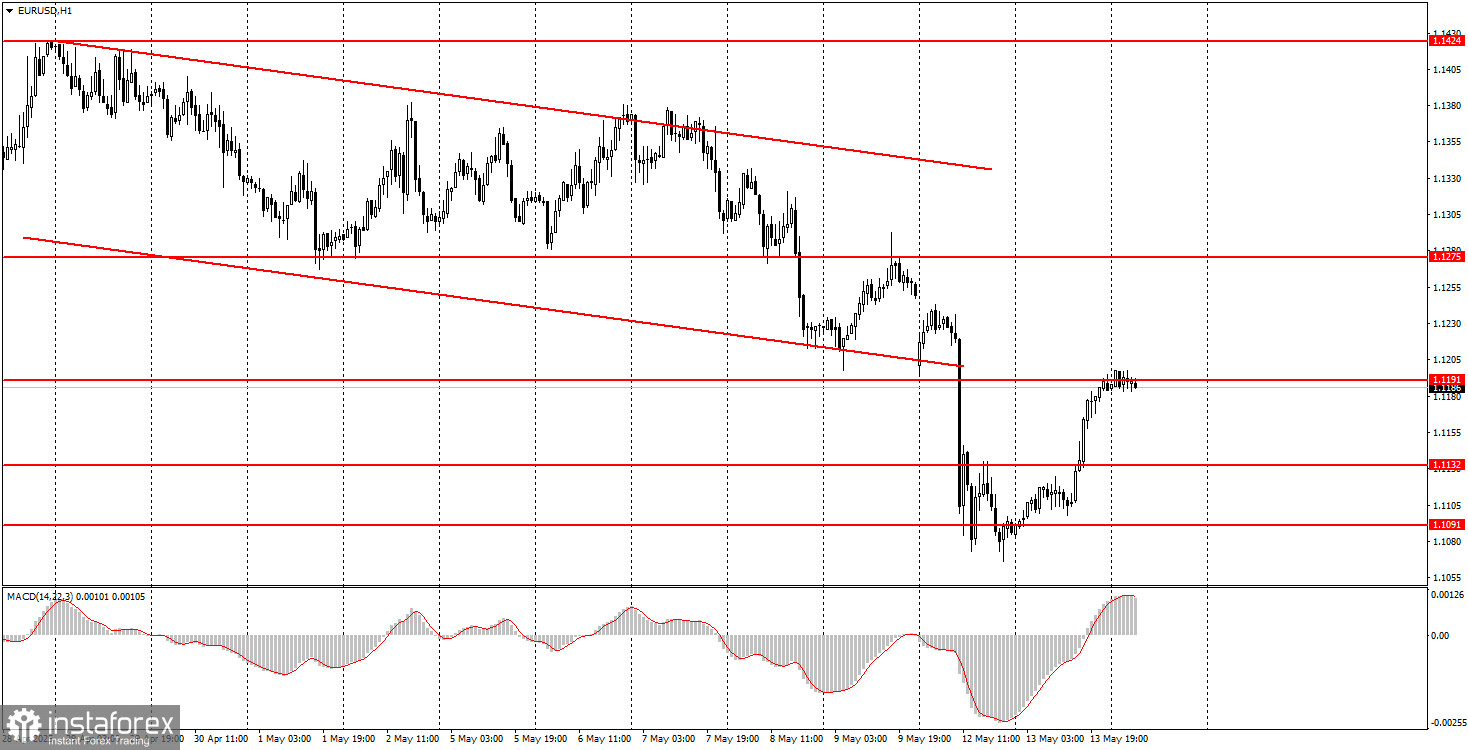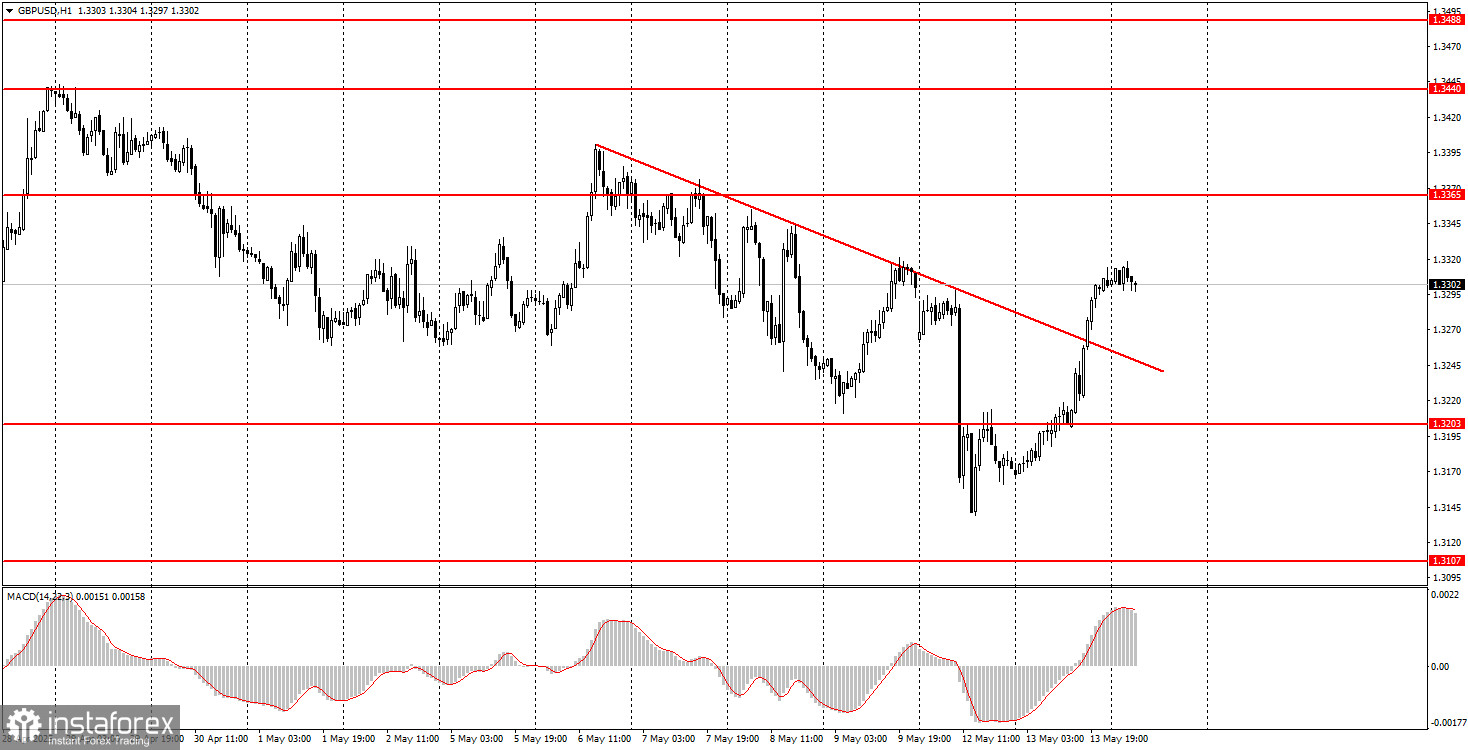Analysis of Macroeconomic Reports:

There are very few macroeconomic events scheduled for Wednesday. The only item of note is the second estimate of Germany's Business Activity Index for April. Second estimates typically do not differ much from the first, so we do not anticipate this indicator will have a significant impact. Accordingly, the market is likely to show no reaction. No events are scheduled today in the Eurozone, the United Kingdom, or the United States.
Analysis of Fundamental Events:
Once again, there is no point in discussing any fundamental events besides Trump's trade war. The escalation has been paused, and Trump continues announcing potential trade agreements without providing details. The dollar decline may resume if Trump begins to impose new tariffs, raise existing ones, or fail to sign trade agreements with most countries. However, the ongoing de-escalation of the conflict should, at least occasionally, support the U.S. dollar. It must be acknowledged that overall market sentiment toward the dollar remains highly negative, making it very difficult for the greenback to gain significant strength.
Thus, future market movements still depend entirely on Trump—specifically, on whether trade deals are signed and the previously imposed tariffs are reduced.
Conclusions:
On this third trading day of the week, both currency pairs (EUR/USD and GBP/USD) may move in either direction, and trading decisions must be based solely on technical factors. Both pairs exhibited strong movement on Monday and Tuesday, each driven by concrete reasons. Today, however, could be a "quiet day."
Key Rules for the Trading System:
- Signal Strength: The shorter the time it takes for a signal to form (a rebound or breakout), the stronger the signal.
- False Signals: If two or more trades near a level result in false signals, subsequent signals from that level should be ignored.
- Flat Markets: In flat conditions, pairs may generate many false signals or none at all. It's better to stop trading at the first signs of a flat market.
- Trading Hours: Open trades between the start of the European session and the middle of the US session, then manually close all trades.
- MACD Signals: On the hourly timeframe, trade MACD signals only during periods of good volatility and a clear trend confirmed by trendlines or trend channels.
- Close Levels: If two levels are too close (5–20 pips apart), treat them as a support or resistance zone.
- Stop Loss: Set a Stop Loss to breakeven after the price moves 15–20 pips in the desired direction.
Key Chart Elements:
Support and Resistance Levels: These are target levels for opening or closing positions and can also serve as points for placing Take Profit orders.
Red Lines: Channels or trendlines indicating the current trend and the preferred direction for trading.
MACD Indicator (14,22,3): A histogram and signal line used as a supplementary source of trading signals.
Important speeches and reports, which are consistently featured in the news calendar, can significantly influence the movement of a currency pair. Therefore, during their release, it is advisable to trade with caution or consider exiting the market to avoid potential sharp price reversals against the prior trend.
Beginners in the Forex market should understand that not every transaction will be profitable. Developing a clear trading strategy and practicing effective money management are crucial for achieving long-term success in trading.






















